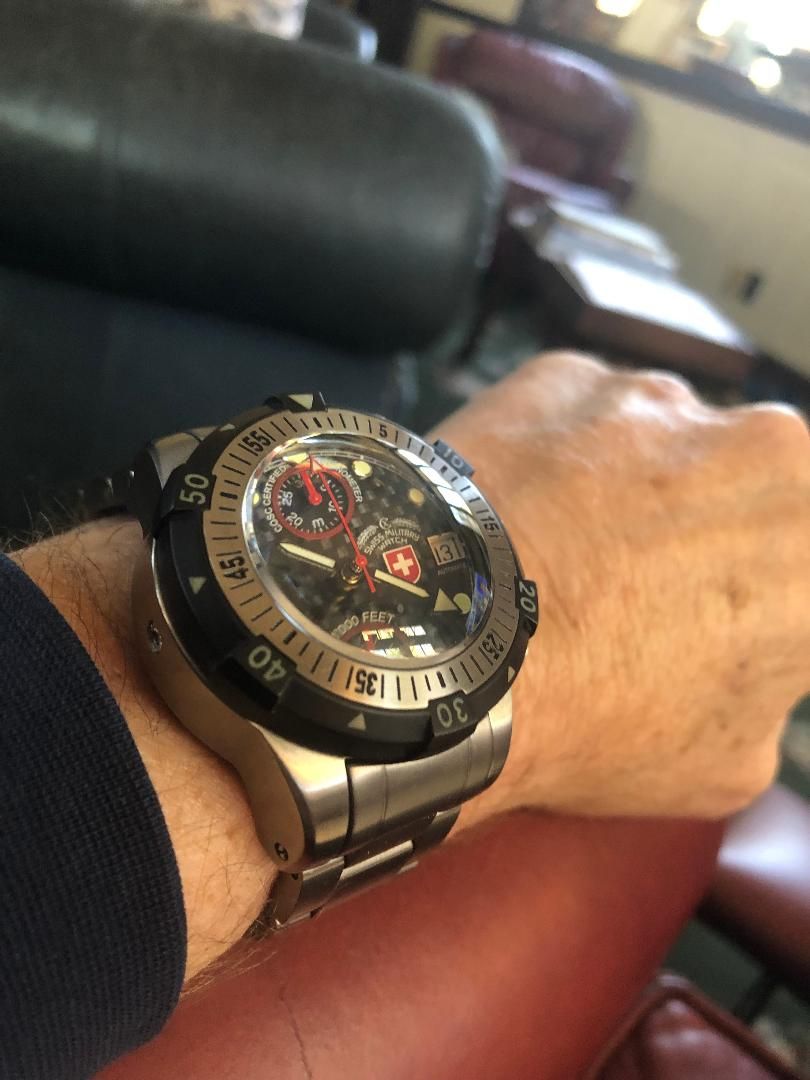Well, there are really three considerations at play here: actual thickness, perceived thickness, and weight.
- Actual thickness is obvious: the thicker the watch, the more difficult to cover it with a cuff, the more likely you are to bang it into things.
- Perceived thickness is how thick it looks on the wrist. For example, the Rolex Submariner is 12.5mm thick, but about 2mm of that is the protruding caseback that isn't really seen because it nestles into your wrist. The problem here is one of perception: how "slab-sided" does your watch look?
- Finally, there's weight. The thicker the watch, the heavier it is - unless it's plastic (think G-Shock) or titanium - and the more uncomfortable it will be as the day wears on.
So in a true "tale of two watches," consider the Bremont and the Blancpain in my sig line. The former is 17.5mm tall, the latter is 14.8mm. Both thick watches. But the Bremont is in titanium, so it weighs considerably less than the Blancpain. And Bremont uses a design they call their "Trip Tick" case, which breaks the case into three contrasting parts, which helps prevent the case from looking slab-sided.
![]()
![]()
Or maybe consider the Omega Grey Side, which is 16.5mm thick, but A) is made out of ceramic thus mitigating weight, and B) doesn't look as thick as its true thickness, because about 3.5-4mm of the thickness comes from the "sapphire sandwich."
![]()
So normally, I'd say no more than 15mm thick, especially on steel bracelet, because you're going to have weight issues. But if you can mitigate the weight and perceived thickness, you can conceivably go thicker.
Regards,
Alysandir
![]()






















